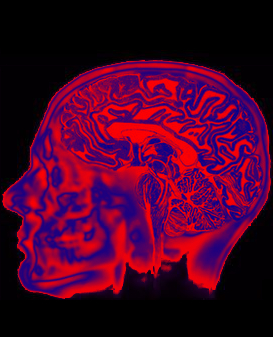Schizophrenia traced to eight separate sources
 A new study has suggested that schizophrenia is not a single disease, but a group of eight genetically distinct disorders.
A new study has suggested that schizophrenia is not a single disease, but a group of eight genetically distinct disorders.
A new genetic analysis technique was applied to thousands of schizophrenia sufferers, and identified distinct gene clusters for eight different classes of schizophrenia, each with its own set of symptoms.
It is a breakthrough both for the understanding of schizophrenia, but even more so for the data analysis required to find out how complex sets of genes interact.
Previous studies have shown that around 80 per cent of the risk for schizophrenia is inherited, but scientists have struggled to identify specific genes for the condition.
“Genes don’t operate by themselves,” said Dr Robert Cloninger, one of the study’s senior investigators.
“They function in concert much like an orchestra, and to understand how they’re working, you have to know not just who the members of the orchestra are but how they interact.”
The team at Washington University in the US matched precise DNA variations in people with and without schizophrenia to symptoms in individual patients.
The researchers analysed nearly 700,000 sites within the genome where a single unit of DNA is changed, often referred to as a single nucleotide polymorphism (SNP).
They looked at SNPs in 4,200 people with schizophrenia and 3,800 healthy control subjects, learning how individual genetic variations interacted with each other to produce the illness.
In some patients with hallucinations or delusions, for example, the researchers matched distinct genetic features to patients’ symptoms, demonstrating that specific genetic variations interacted to create a 95 per cent certainty of schizophrenia.
In another group, they found that disorganised speech and behaviour were specifically associated with a set of DNA variations that carried a 100 per cent risk of schizophrenia.
“What we’ve done here, after a decade of frustration in the field of psychiatric genetics, is identify the way genes interact with each other, how the ‘orchestra’ is either harmonious and leads to health, or disorganized in ways that lead to distinct classes of schizophrenia,” Dr Cloninger said.
The groups of interacting gene clusters worked together to create an extremely high and consistent risk of illness, in the order of 70 to 100 per cent.
This would make it almost impossible for someone with those genetic variations to avoid the condition.
The study identified 42 clusters of genetic variations in total, all of which dramatically increased the risk of schizophrenia.
The investigators replicated their findings in two additional DNA databases of people with schizophrenia, which indicates that finding the gene variations that are working together is a valid avenue for future diagnosis and treatment.
By identifying groups of genetic variations and matching them to symptoms in individual patients, the team says it soon may be possible to target treatments to specific pathways that cause problems.
Dr Cloninger added it may be possible to use the same approach to better understand how genes work together to cause other common but complex disorders.
“People have been looking at genes to get a better handle on heart disease, hypertension and diabetes, and it’s been a real disappointment,” he said.
“Most of the variability in the severity of disease has not been explained, but we were able to find that different sets of genetic variations were leading to distinct clinical syndromes. So I think this really could change the way people approach understanding the causes of complex diseases.”








 Print
Print